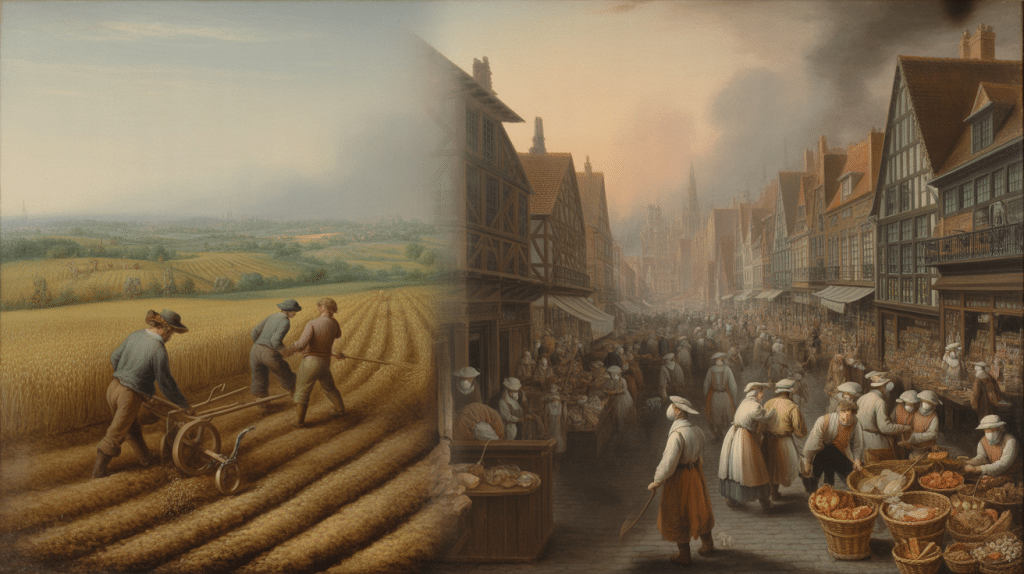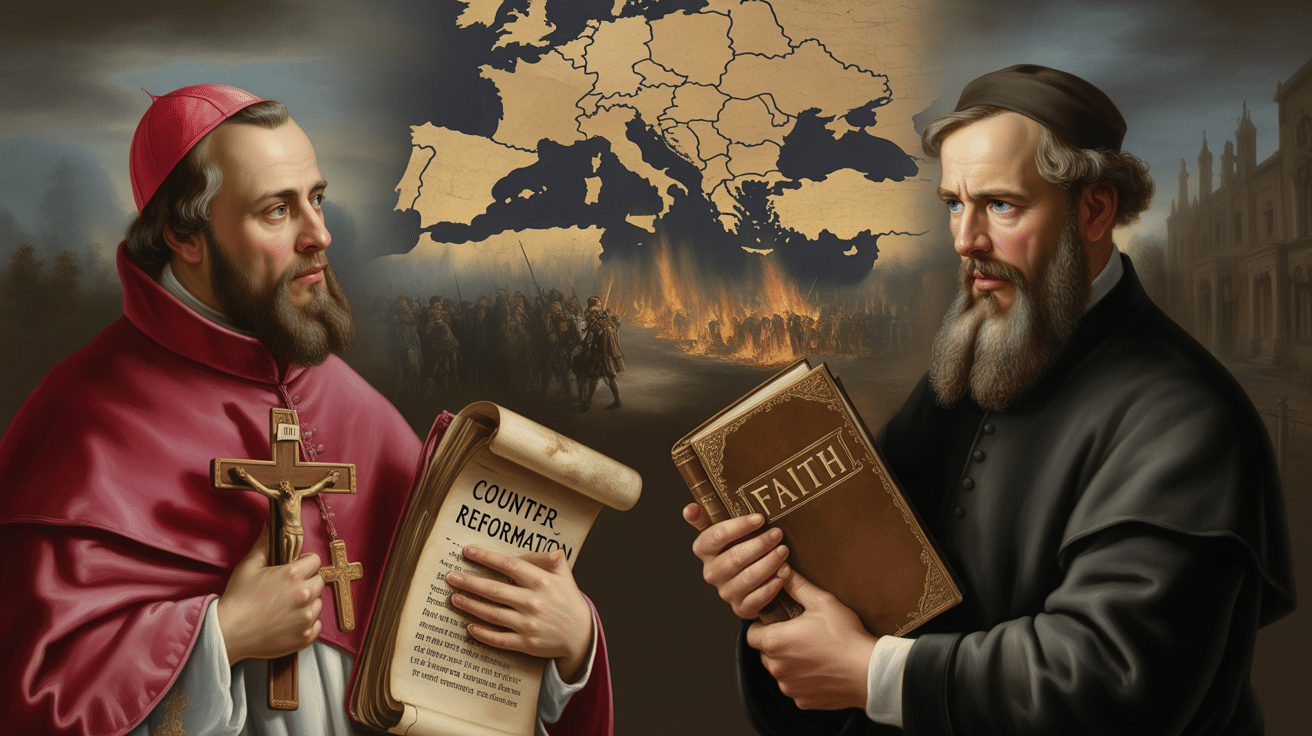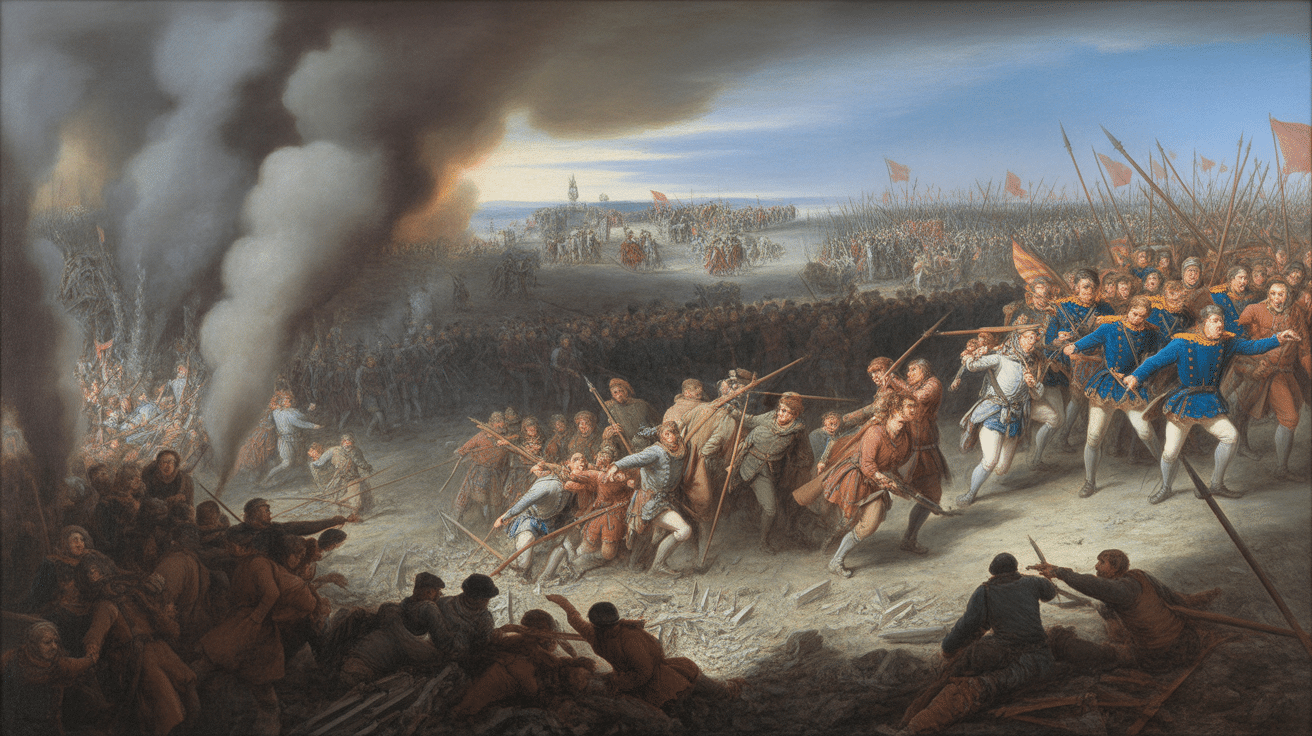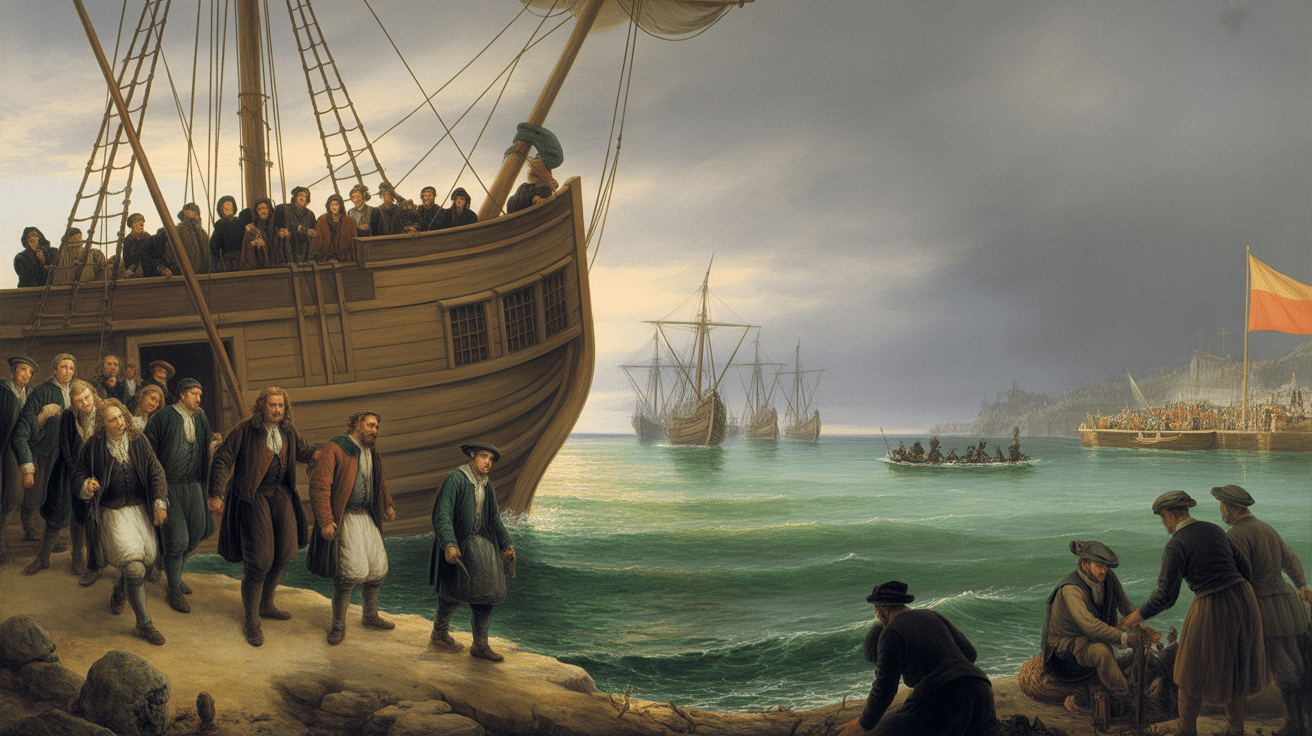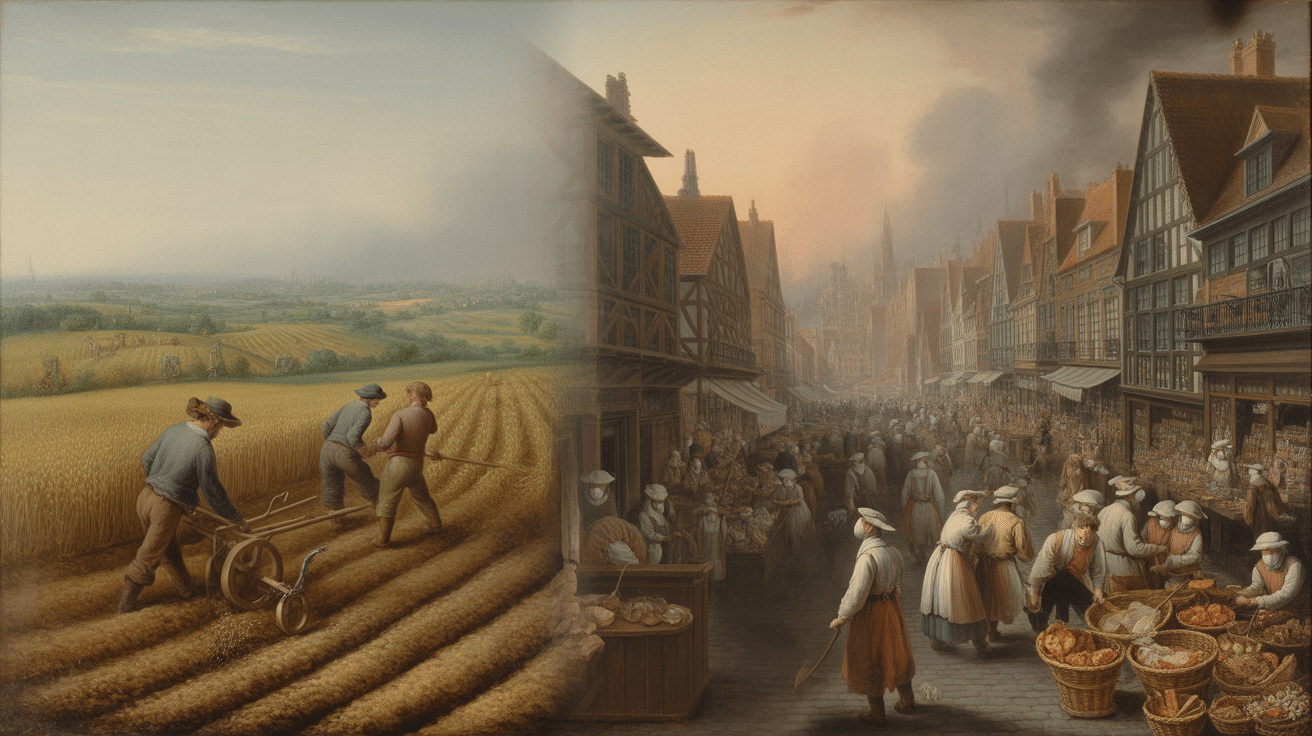The 1600s were one of those times when everything seemed to happen all at once.
Kings built bigger kingdoms. Scientists made discoveries that changed how we see the world. Old ways of thinking got turned upside down.
In Europe, there were wars and revolutions. Over in China, the Qing dynasty was growing stronger. Japan decided to close its doors to outsiders.
And in India, the Mughal Empire created some of the most beautiful buildings we’ve ever seen.
People started trading with places they’d never been before. Cities got bigger and busier. Artists and writers had so much inspiration that they didn’t know where to start.
It was a time when the whole world seemed to be moving and changing. Let’s see what made this century so special.
Rulers and Emerging Nations
The 17th century witnessed the rise and fall of powerful empires and the solidification of monarchies. Kings like James I of England and Louis XIV of France redefined governance.
At the same time, the Romanov dynasty in Russia and the independence of the Dutch Republic marked significant political shifts that would echo into the future.
| Event/Figure | Years | Description |
| King James I of England | 1603–1625 | First monarch to rule England and Scotland, uniting the crowns after Queen Elizabeth I. |
| The Romanov Dynasty | Began in 1613 | Tsar Michael I was the first Romanov ruler, starting a dynasty that ruled Russia for over 300 years. |
| The Dutch Republic | Independence in 1648 | Formed after gaining independence from Spain, it became a major maritime and trading power Europe. |
| Louis XIV of France | 1643–1715 | Known as the “Sun King,” he centralized royal power and elevated France’s status as a leading European nation. |
Belief Systems and Religious Struggles
Religion in the 17th century was deeply intertwined with politics and identity, often driving wars and shaping societies.
The Thirty Years’ War, the English Civil War, and the Catholic Counter-Reformation were all fueled by religious tensions, influencing European politics and governance.
- The Thirty Years’ War (1618–1648): A deadly religious conflict that turned political, ending with the Treaty of Westphalia, establishing sovereignty.
- The English Civil War (1642–1651): Conflict over monarchy and Parliament, with religion playing a key role in dividing the nation.
- The Catholic Counter-Reformation: The Catholic Church sought to stop the spread of Protestantism, influencing politics and society.
Together, these conflicts emphasized that religion and power were inseparable and that the control of faith often meant control of people.
Start of Modern Science
The 17th century marked the beginning of the scientific revolution, where thinkers like Galileo, Kepler, and Newton laid the foundations of modern science.
The adoption of the scientific method transformed people’s understanding of the world, moving from tradition and superstition to evidence-based knowledge.
| Figure/Event | Contribution | Impact |
| Galileo Galilei (1564–1642) | Confirmed heliocentric theory using telescopic observations of planets and moons. | Challenged long-held religious beliefs, promoting evidence-based astronomy. |
| Johannes Kepler (1571–1630) | Developed the three laws of planetary motion, showing that planets orbit in ellipses, not circles. | Provided a mathematical basis for Heliocentrism and advanced astronomy. |
| Isaac Newton (1642–1727) | Published Principia Mathematica in 1687, introducing laws of motion and universal gravitation. | Revolutionised physics and laid the foundation for classical mechanics. |
| Scientific Method | Promoted a new process of inquiry based on observation, experimentation, and repeatable results. | Established a standard for scientific research still used in modern science. |
Rather than simply listing discoveries, these thinkers redefined how truth was uncovered, giving rise to a method that shapes all modern science.
However, in Europe’s colonies, such progress contrasted sharply with systems still dominated by myth and tradition, reflecting an uneven global pace of change.
War and Changing Borders
The 17th century was dominated by conflicts driven by religious and political ambitions.
These wars reshaped Europe and global geopolitics, leading to new concepts of sovereignty and national borders.
- 1618–1648: Thirty Years’ War – A brutal conflict that ended with the Treaty of Westphalia, introducing the concept of sovereign nations.
- 1635–1659: Franco-Spanish War – Led to the decline of Spain and the rise of France as Europe’s dominant power.
- 1642–1651: English Civil War –Conflict between the monarchy and Parliament resulted in King Charles I’s execution.
- 1683–1699: Great Turkish War – The Ottoman Empire was pushed back by European powers and forced to sign the Treaty of Karlowitz.
War was both destruction and design. The treaties that followed often created more lasting legacies than the battles themselves.
Shifting Populations and Empire
As ships crossed oceans, the global map changed. Colonies, trade routes, and human migration shaped the emerging world economy.
- The Mayflower (1620): Puritans established the Plymouth Colony in North America.
- Dutch East India Company (1602): Dominated global trade, especially in Asia.
- Atlantic Slave Trade: Millions of Africans were forcibly transported to the Americas, fueling plantation economies.
- Expansion of European Empires: Spain, Portugal, France, and Britain established colonies in the Americas, Africa, and Asia.
This expansion brought wealth to European ports but devastation to Indigenous populations. Behind the glory of the empire lay exploitation.
Everyday Lives and Challenges
Life in the 17th century was shaped by hardship, change, and survival. Agriculture remained central to daily life, while urbanisation, trade, and disease reshaped communities.
- Agriculture: Most people were farmers, working the land to produce food for themselves and others. Farming was hard work, and poor harvests often led to hunger and disease.
- Plague and Illness: Disease, especially plague, was a constant threat. In cities, overcrowding and poor sanitation made the spread of disease easy. The Great Plague of London (1665) killed a large portion of the population.
- Urbanisation: Cities grew as people moved to find work, especially in increasing trade centers. Cities like London, Paris, and Amsterdam became active hubs of commerce and culture.
- The Rise of Trade: The growth of global trade helped fuel the rise of a merchant class. New goods like spices, sugar, and tobacco became part of daily life.
While challenges like disease and economic instability were prevalent, the growth of trade and urbanization paved the way for the modern economy.
Gender roles and class structures shaped daily life. Women’s work in households and markets was crucial but often undocumented.
Conclusion
The 17th century saw major changes with border conflicts, new ideas challenging beliefs, and increased trade connecting distant regions.
Across the globe, people responded to disruption in many ways, through resistance, adaptation, invention, or survival.
Many structures that shape daily life today began to form during this period. Systems of government, approaches to science, and international commerce all took on recognizably modern forms.
Though far removed in time, the century’s influence can still be seen in politics, education, and cultural life.
Looking closely at this period helps explain how the present came to be, not as something entirely new, but as the outcome of long and often difficult shifts that began long ago.

